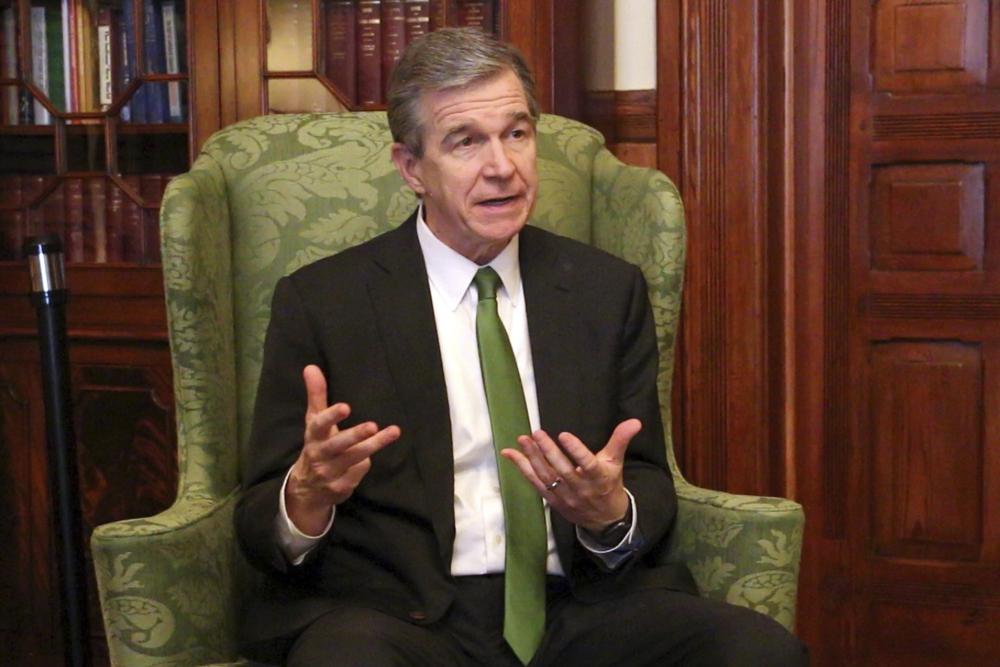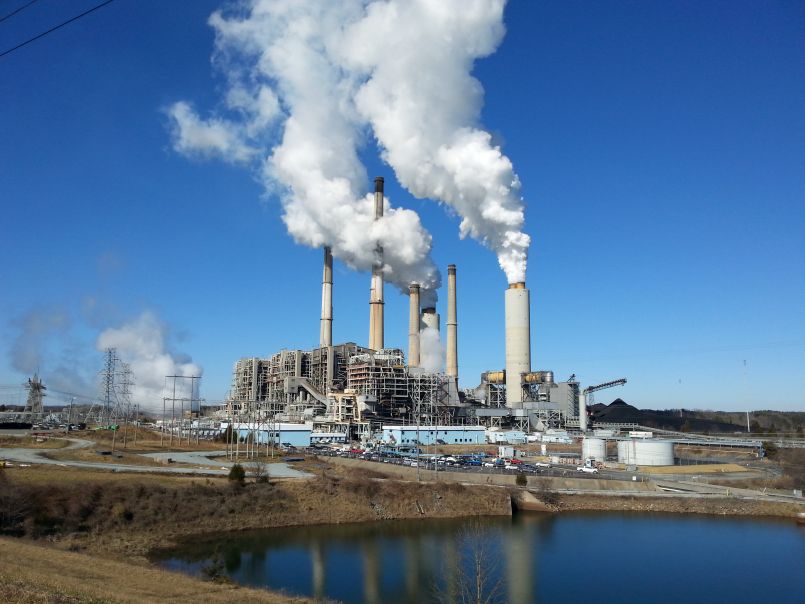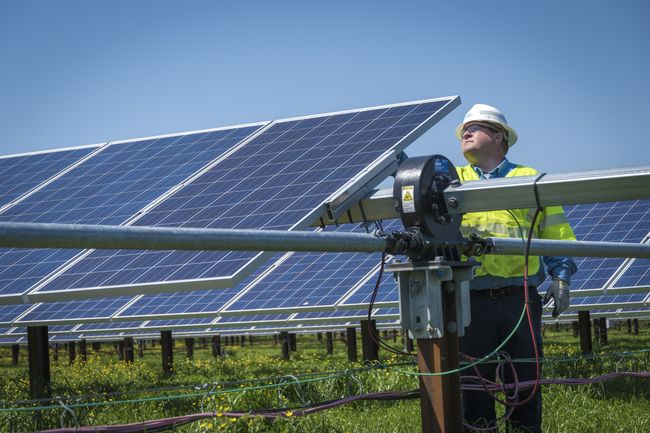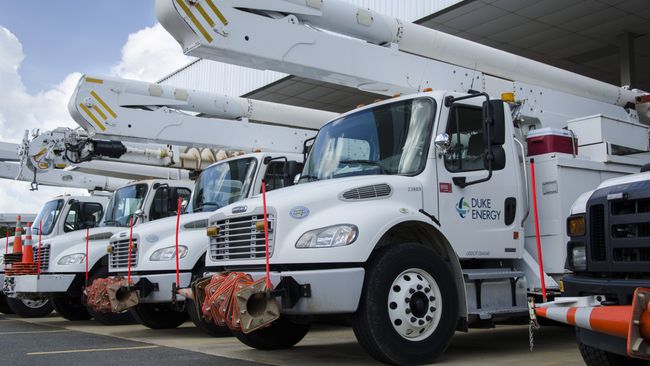The Environment North Carolina Research and Policy Center released its state assessment of renewable energy technologies earlier this week. The ‘Renewables on the Rise’ report, which studies the growth of these technologies over the last ten years, updates how North Carolina compares to other states in clean energy infrastructure and capacity.
Five areas are examined across all states: growth in annual solar power generation, annual wind generation, energy efficiency programs, electric vehicles sold, and energy storage.
According to the report, North Carolina ranks third for solar energy growth and second in the nation for installed solar capacity. This is largely thanks to economic policies encouraging investment into solar infrastructure in the state’s rural communities, which have helped the state consistently rank top ten in the nation over the last decade.
Director of Environment North Carolina Drew Ball says this overall growth is promising for the state’s clean energy future, as well as the rest of the county’s.
“We’ve seen an 87,670 percent increase over the last decade in the amount of electricity we get from the sun,” says Ball. “Considering that ten years ago, wind and solar produced about one percent of our electricity nationally, these numbers are pretty amazing. If they continue to increase at just a third of the rate they’ve grown nationally, wind and solar will provide enough power to meet America’s electricity needs by 2035.”
North Carolina also ranked highly in electric vehicles sold overall and electric vehicle charging stations, placing seventeenth and tenth respectively.
Another key element of the ‘Renewables on the Rise’ report is the state’s wind energy statistics. North Carolina is currently under a moratorium passed by the general assembly suspending any new wind energy projects from being permitted. The assembly says this 18-month period allows them to study if the state’s existing wind energy stations interfere with any regional military operations.
Adam Forrer, who oversees North Carolina for the Southeastern Wind Coalition, says the report proves wind energy’s potential in the state as the moratorium approaches its expiration on December 31, 2018. Despite ranking 30th overall in wind energy growth, Forrer points to North Carolina’s offshore wind and the economic success of the Amazon Wind Farm near Elizabeth City as indicators of capacity.
“This report does a great job of highlighting the wind aspect of the clean energy conversation,” says Forrer. “We certainly think that wind energy is going to provide a productive and active role in our state’s clean energy future. It can help provide a clean source of energy as well as the opportunity for the state to grow the economy in local communities across North Carolina.”
To see the full ‘Renewables on the Rise’ report, visit Environment North Carolina’s website.
Related Stories
‹

North Carolina Gov. Cooper Vetoes Two More Bills, but Budget Still on Track To Become Law TuesdayWritten by GARY D. ROBERTSON North Carolina Gov. Roy Cooper vetoed on Monday both an energy bill and the legislature’s annual regulatory reform measure, while allowing legislation directing more state government oversight of high school athletics to become law. The measures were among those the General Assembly approved last month before it left Raleigh for […]

Remember the State's Carbon Plan? Here's How Duke Energy Plans to Address ItAbout a month ago, the state passed a plan that requires public utility companies to change how they use fossil fuels.

NC Governor Has Little Wiggle Room With Legislature in 2023Written by GARY D. ROBERTSON North Carolina Democratic Gov. Roy Cooper described on Wednesday jobs announcements, an emerging clean energy sector and his ability to block “culture-war, business-killing” laws on social issues from the General Assembly among his administration’s accomplishments during 2022. There could be little room for error in his dealings with the legislature […]

Duke Energy, Climate Advocacy Groups Present Differing Carbon Plans to NCDuke Energy has a plan for reaching North Carolina's carbon emissions goals – but some environmental groups are suggesting different methods.
![]()
Kevin Lindley - Chatham County Environmental Quality DirectorChatham County Environmental Quality Director Kevin Lindley spoke with 97.9 The Hill's Andrew Stuckey on Tuesday, August 2. He discussed the new Solarize the Triangle initiative that incentivizes residents and business to install solar systems.
![]()
Commerce Inquiry Imperils Solar Industry, Advocates SayWritten by MATTHEW DALY In a decision that could dramatically undercut President Joe Biden’s ambitious climate goals, the Commerce Department said Monday it is investigating whether imports of solar panels from Southeast Asia are circumventing anti-dumping rules that limit imports from China. Clean energy leaders said the investigation — which could result in retroactive tariffs […]

Climate Change: North Carolina Gov Signs Major Energy LawWritten by GARY D. ROBERTSON Democratic Gov. Roy Cooper of North Carolina signed a milestone energy bill into law Wednesday that aims to sharply reduce greenhouse gas emissions from the state’s power plants by 2030, celebrating the legislative accomplishment with Republican lawmakers. In a ceremony with legislators from both parties, Cooper enacted a consensus measure that now […]
![]()
Textile, Environment Advocates Speak Against NC Energy BillWritten by GARY D. ROBERTSON North Carolina textile executives joined advocates for the environment and the poor on Monday to urge state legislators to reject a major energy bill pushed by House Republicans. The coalition held a news conference to criticize the wide-ranging proposal, which would order an early retirement of several coal-fired plants operated […]

Sponsors Defend NC Energy Bill Goals While Cooper Pans ItWritten by GARY D. ROBERTSON Negotiators of a wide-ranging North Carolina energy bill to retire Duke Energy coal-fired electricity plants, expand solar power production and keep nuclear power defended their goals on Thursday despite current opposition to the measure from interest groups and Gov. Roy Cooper. The bill’s contents, revealed this week after months of input […]

UNC Partnership, Researchers Working to Convert Sunlight Into Liquid FuelThe University of North Carolina at Chapel Hill will lead a $40 million Department of Energy project to research solar energy production. The grant has been given to the North Carolina-based Center for Hybrid Approaches in Solar Energy to Liquid Fuels, otherwise known as CHASE, to accelerate fundamental research of the production of fuels from […]
›







